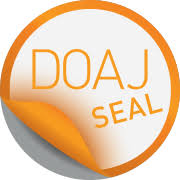Investigation of the influence of structural inhomogeneities on the strength of welded joints of functionally gradient materials
DOI:
https://doi.org/10.15276/opu.1.60.2020.03Keywords:
weld strength, defect, mathematical model, stress intensity factor, adequacyAbstract
The effect of defects on the mechanical properties of joints of functionally gradient materials, which depends on their shape, operating conditions, and the nature of the load, is considered. The presence of defects in the welded joints significantly reduces the working ability of the structures and, under certain conditions, can lead to their destruction. The problem of the strength of structures that have welded joints is because of the installation of local stress concentrators, near defects of the cracks in which the stresses are well above average. To determine the strength of welded joints and to establish the requirements for their quality, a mathematical model is built that allows you to investigate the impact of the most likely defects on the strength of the joints. The defects taking place in the welding joints on the load-bearing capacity of the structures can be realized by the necessary criterion of local destruction of К1с and the action of operational loads. Based on the value of the stress intensity factor and the value of the heat flux acting on the structure found by the model, by which the stresses are formed in the joint, it is possible to determine the limiting values of the defect size, at which this defect will remain in equilibrium without forming the main crack. The adequacy of the research results obtained was theoretically verified by the strength of welded joints of aluminum alloys, taking into account hot cracks in them. The deformation strengthening of welded joints, which occurs in high-strength complex alloyed aluminum alloys, reduces their strength because of the appearance of intermetallic phases in them, and welds.
Downloads
References
Промышленные алюминиевые сплавы: Справочник / С.Г. Алиева и др. ; под редак. Белов А.Ф. и др. М. : Металлургия, 1984. 528 с.
Рабкин Д.М., Игнатьев В.Г., Довбищенко И.В. Состояние и перспективы применения алюминиевых сплавов в сварных конструкциях. Киев : Наук. думка, 1975. 48 с.
Колобнев Н.И., Фридляндер И.Н. Алюминий-литиевые сплавы – новый этап снижения массы летательных аппаратов. Авиационные материалы на рубеже ХХ–ХХI веков. 1994. С. 89–92.
Алюминий и его сплавы в современных сварных конструкциях / Ищенко А.Я., Лабур Т.М., Бер- надский В.Н., Маковецкая О.К. Киев : Екотехнологія, 2006. 112 с.
Овчинников В.В., Дриц А.М., Крымова Т.В. Технологические особенности производства сварных конструкций летательных аппаратов из алюминиево-литиевого сплава 1460. Сварочное про- изводство. 1997. № 12. С. 26–29.
Dawes C.J. An introduction to friction stir welding and its development. Welding & Metal Fabrication. 1995. № 1. P. 13–16.
Покляцкий А.Г., Ищенко А.Я., Яворская М.Р. Прочность сварных соединений алюминиевых сплавов при сварке трением с перемешиванием. Проблеми ресурсу і безпеки експлуатації кон- струкцій, споруд та машин / За ред. Б. Є. Патона. Київ : ІЕЗ ім. Є.О. Патона, 2006. С. 365–367.
Kallee S., Nicholas D. Causing a stir in the future. Welding and Joining. 1998. № 2. P. 18–21.
Ищенко А.Я., Подъельников С.В., Покляцкий А.Г. Сварка трением с перемешиванием алюминиевых сплавов (Обзор). Автоматическая сварка. 2007. № 11. С. 32–38.
Kunitsyn M.V., Usov A.V. Tribocorrosion research of NI-Al2O3/TIO2 composite materials obtained by the method of electrochemical deposition. Сучасні техноглогії в машинобудуванні. 2017. № 12. P. 61–70.
Морозов Н.Ф. Математические вопросы теории трещин. Москва : Наука. 1984. 256 с.
Попов Г.Я. Избранные труды. Том 1, 2. Одесса : Издат.-полиграф. дом ВМВ, 2007. 896 с.
Екобори Т. Научные основы прочности и разрушения материалов. Пер. с яп. Киев .: Наукова думка, 1978. 352 с.
Попов Г.Я. Концентрация упругих напряжений возле штампов, разрезов, тонких включений и подкреплений. Москва : Наука, 1982. 344 с.
Усов А.В. Математическое моделирование процессов контроля покрытия элементов конструкций на базе СИУ. Проблемы машиностроения. 2010. Т. 13, №1. С. 98–109.
Моделирование систем: монография / Оборский Г.А., Дащенко А.Ф., Усов А.В., Дмитришин Д.В. Одесса : Астропринт, 2013. 664 с.
Введение в методы оптимизации и теорию технических систем / Усов А.В., Оборский Г.А., Морозов Ю.А., Дубров К.А. Одесса : Астропринт, 2005. 496 с.
Райс Дж. Математические методы в механике разрушения. Разрушение. Москва : Мир, 1975. Т. 2. С. 204–335.
Черепанов Г.П. Механика хрупкого разрушения. Москва : Наука, 1974. 640 с.
Витвицкий П.М., Попина С.Ю. Прочность и критерии хрупкого разрушения стохастически дефектных тел. Киев : Наук. Думка, 1980. 187 с.
Саврук М.П., Осив П.Н., Прокопчук И.В. Численный анализ в плоских задачах теории трещин. Киев : Наукова думка, 1989. 248 с.





